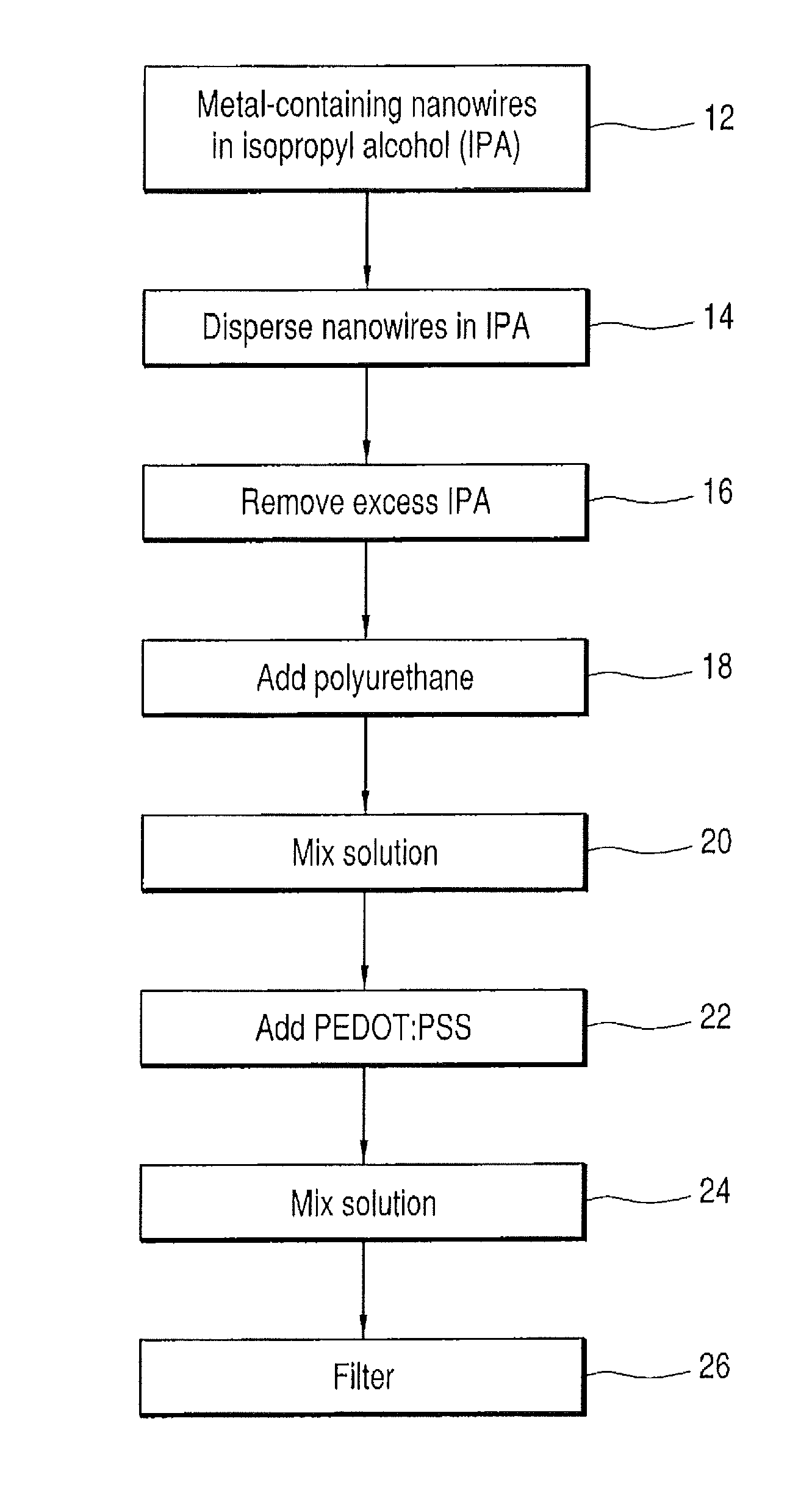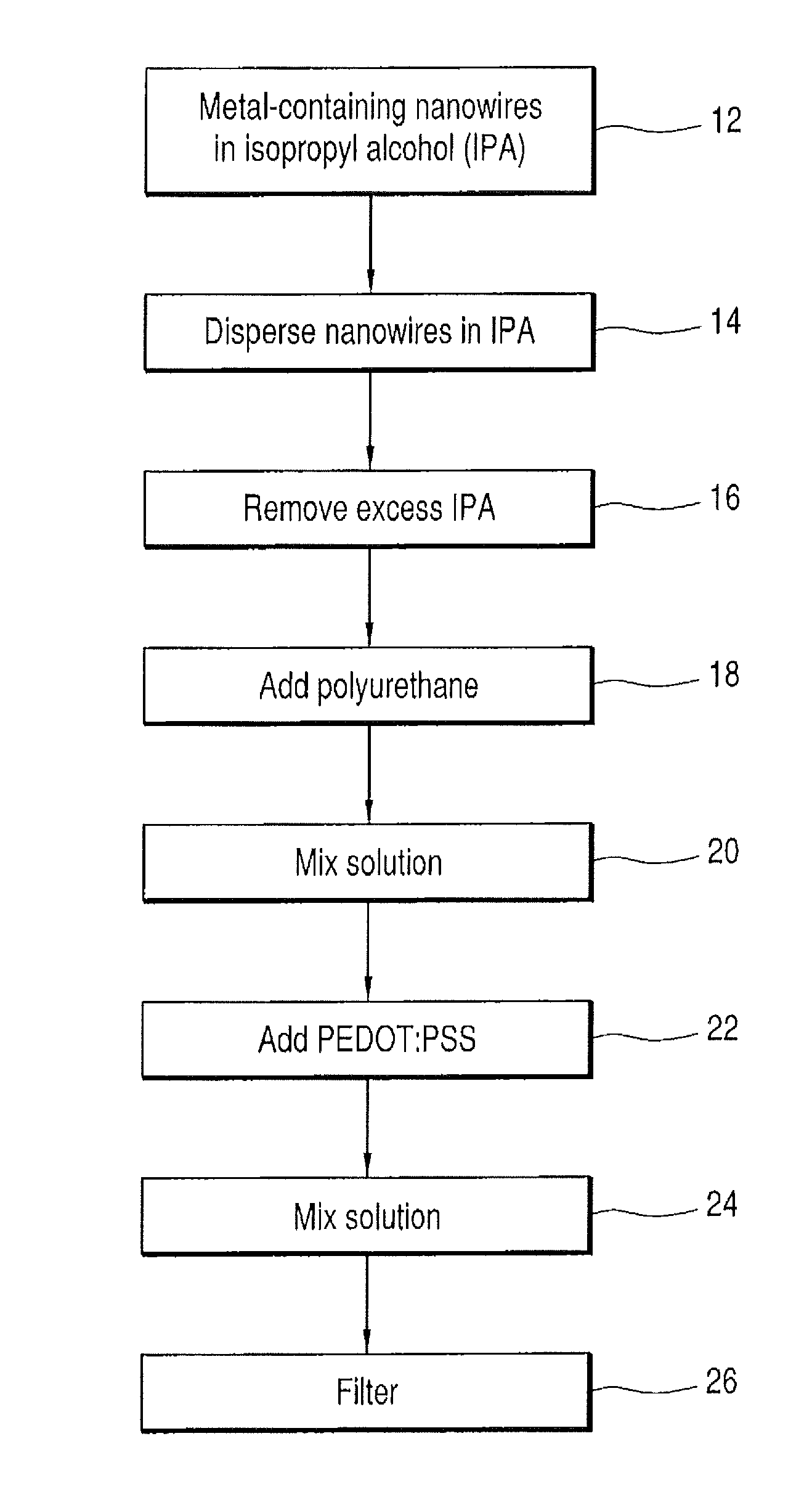Conductive water-borne coatings and methods for enhancing coating conductivity
a technology of water-borne coatings and coatings, applied in electrically-conductive paints, static dischargers of aircraft, transportation and packaging, etc., to achieve the effect of reducing electrical resistance characteristics and enhancing conductivity
- Summary
- Abstract
- Description
- Claims
- Application Information
AI Technical Summary
Benefits of technology
Problems solved by technology
Method used
Image
Examples
example
[0019]Using a Branson B2510MT Ultrasonic Cleaner filled with water, the 1 mg / ml copper-nickel nanowires (40% alloy in isopropyl alcohol—Nanoforge) was sonicated in a bottle for 15 minutes. Using a Fisher Scientific 1-10 ml pipette (supplier item 13 690 034), 1 to 50 ml of copper-nickel nanowires in solution was pipetted out for experiment and deposited in a glass vial. The vial was placed on top of a ceramic magnet that had been conventionally magnetized through its thickness with 22.5 lbs of maximum pull (C8 grade, 6 inch length, 4 inch width, 0.75 inch thickness, Armstrong Magnets Inc. supplier item 31012). After approximately 30 minutes, the copper-nickel nanowires settled to the bottom, with some of the copper-nickel remaining in the supernatant. Excess isopropyl alcohol (IPA) was pipetted off to obtain desired concentration.
[0020]An amount of 12 ml of Emralon 8301 polyurethane (Henkel North America) was pipetted into the concentrated copper nickel nanowires (in IPA solution). T...
PUM
| Property | Measurement | Unit |
|---|---|---|
| sheet resistance | aaaaa | aaaaa |
| sheet resistance | aaaaa | aaaaa |
| weight percent | aaaaa | aaaaa |
Abstract
Description
Claims
Application Information
 Login to View More
Login to View More - R&D
- Intellectual Property
- Life Sciences
- Materials
- Tech Scout
- Unparalleled Data Quality
- Higher Quality Content
- 60% Fewer Hallucinations
Browse by: Latest US Patents, China's latest patents, Technical Efficacy Thesaurus, Application Domain, Technology Topic, Popular Technical Reports.
© 2025 PatSnap. All rights reserved.Legal|Privacy policy|Modern Slavery Act Transparency Statement|Sitemap|About US| Contact US: help@patsnap.com


